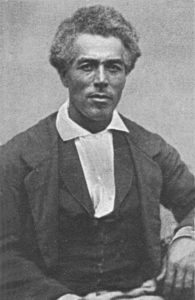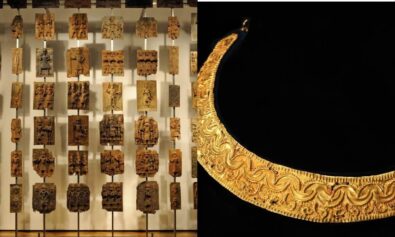Early Years
According to William H. Green, Ph. D., Horace King was born in bondage to Edmond King and Susie (last name unknown) on September 8, 1807 in South Carolina. He eventually moved with his master John Godwin, a contractor who specialized in building houses and covered bridges, to Alabama. Godwin gave King a substantial amount of influence over his construction business.
In 1939, King married a free Black woman, Frances Thomas. They had five children—four sons and one daughter.
Working With His Master
In a recent article about one of King’s bridges, “The Red Oak Creek Covered Bridge,” Atlanta Magazine stated that King and Godwin, learned a sophisticated bridge-building technique called the Town Lattice-Truss, and King showed so much talent for the work that Godwin essentially made him a partner. They both traveled around the South, helping expand its infrastructure to the west. They built a bridge across the Chattahoochee River that linked Columbus to Alabama. When a flood washed it away, they got a contract to build it again. Feeling pressure to finish the job quickly, Godwin told King that he would set him free if the deadline was met.
A Free Man
In February 1846, Godwin kept his word and freed King. King continued to work for Godwin’s construction company and when his former owner died in 1859, King assumed control of Godwin’s business. The documentary, Horace: The Bridge Builder King states that Robert Jemison, Jr., prominent Alabaman and fellow contractor and bridge builder, as well as other influential people, knew King as a master building and bridge builder. Jemison held King in such high esteem, he was willing to change his work schedule on a job so that King could be the superintendent.
Politics
According to Thomas L. French of French & Associates, King became a moderate Republican, serving twice as a member of the Alabama House of Representatives from 1870 to 1874. He rarely occupied his seat during the initial year of his first term and played a limited role in later sessions because he was preoccupied with the physical reconstruction of wagon and railroad bridges, grist and textile mills, and cotton warehouses. He also built the initial Lee County courthouse in Opelika in 1867.
His Legacy
King passed down his business to his son, John T. King and was one of the contractors who built the Negro Building at the Atlanta Cotton States and International Exposition in 1985. His other son, George, continued the work of the King Brothers Bridge Company. Researcher and Historian Karl-Heinz Reilmann, P.E., as stated in the documentary Horace: The Bridge Builder King, was instrumental in King’s nomination to Alabama’s engineering Hall of Fame through transcriptions of Jemison’s letter files.



